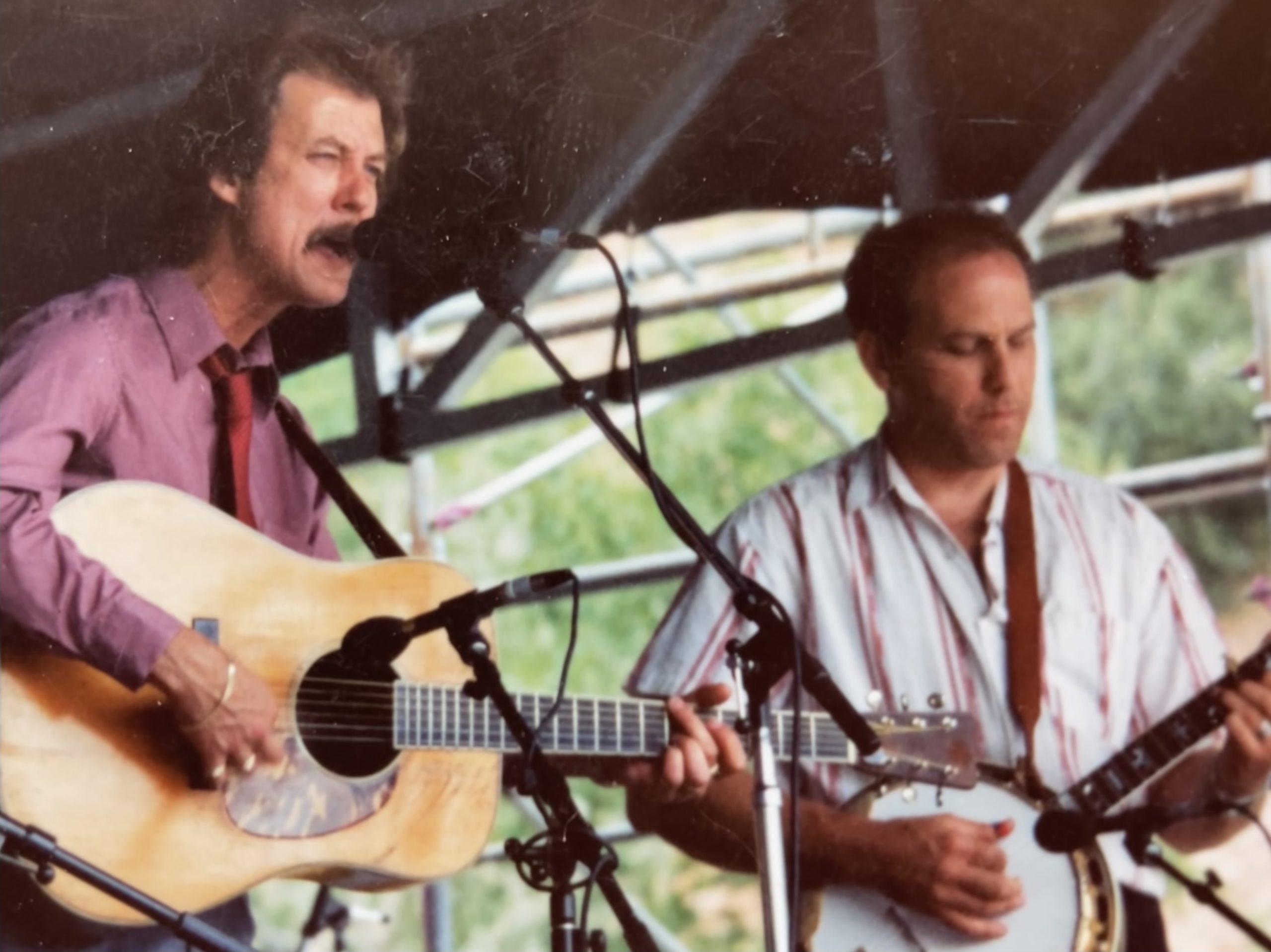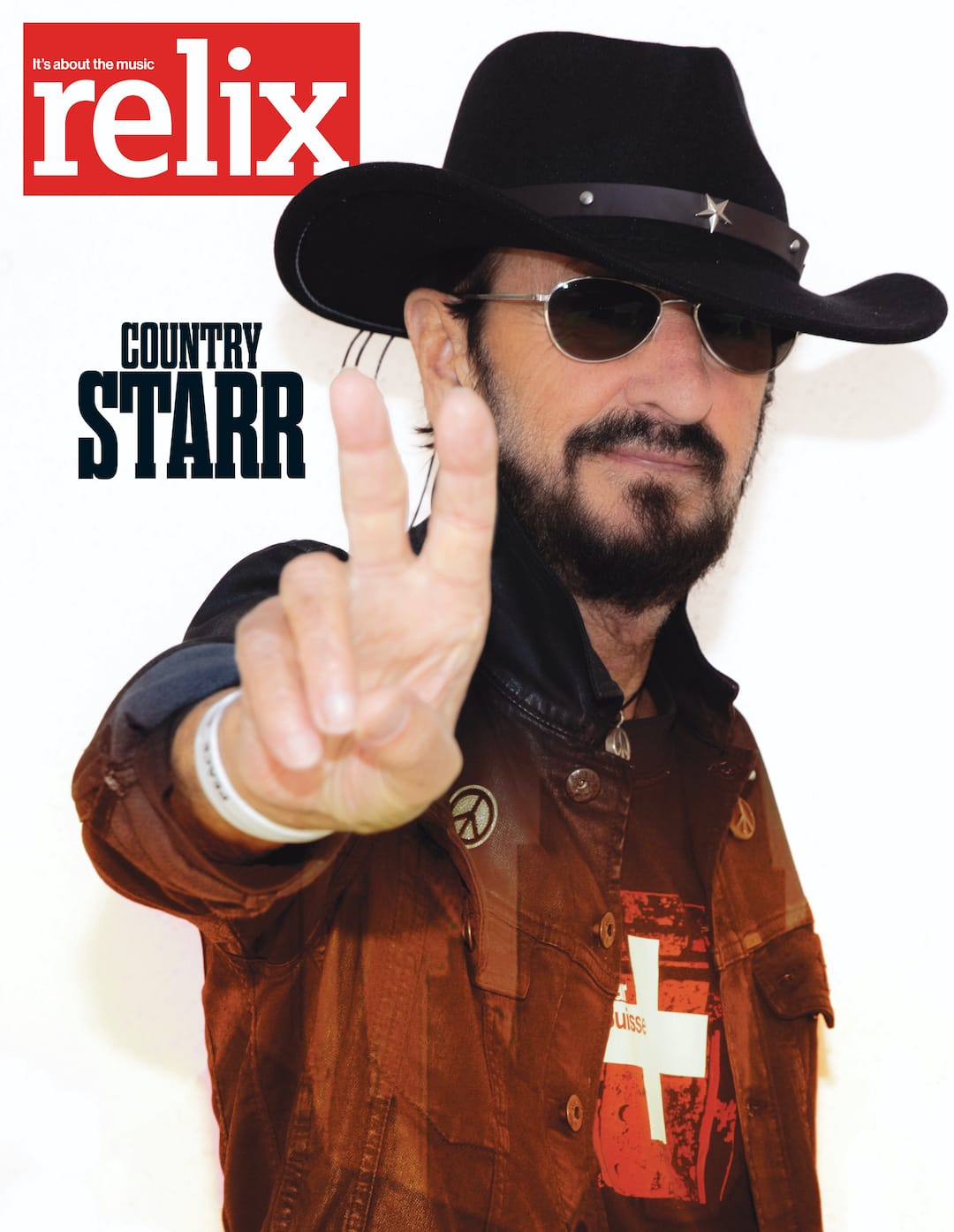In Memoriam: Pete Wernick Remembers Tony Rice

photo credit: Joan Wernick
In bluegrass music history, very few instrumentalists have defined the paths that others have followed. Most of those paths had been set by 1970.
One exception was the acoustic guitar or, in bluegrass-speak, the “flat top box.” Before 1970, its role was mainly as a rhythm instrument. Then along came Tony Rice.
Tony was initially raised in North Carolina then grew up in Southern California. His dad was an amateur musician and Tony cut his teeth playing and singing bluegrass with him and his brothers. Doc Watson and Clarence White originally gave him ideas about what a guitar could do, and by 19 he could power through fiddle tunes like Doc and do slippery, bluesy syncopations like Clarence.
He joined J.D. Crowe’s band, leading J.D. to change their name from the Kentucky Mountain Boys to The New South. No western hats and string ties—these men were well-coiffed with mod shirts and a quiet, macho, we-mean-business attitude that offset their perfect harmonies and clockwork band sound. And they had this guy playing guitar—as no one else ever had and everyone soon wanted to. Tony Rice, the quiet, intense guitar player, was laying down solos with a stout, clear delivery chock-full of blues and surprises, and somehow, still keeping with the bluegrass pulse and approach. And he could really sing, too.
Part of J.D.’s revered banjo sound was his clear articulation of each note individually, not blurred together, even at speeds upward of 10 notes per second. A powerful attack with careful control of sustain yields what J.D. calls “note separation,” and Tony’s four years with J.D. saw him master that high-definition, high-impact approach.
The New South set the pace for young bluegrass pickers far and wide. That era ended in 1975 when Tony decided to switch gears and move to Marin County, Calif. to join in the forming of the David Grisman Quintet. That groundbreaking group used bluegrass instruments, but employed jazzy melodies and chord progressions, minor keys and intricate arrangements without singing or banjo. It was called “Dawg Music” and Grisman is still playing it in 2021.
Tony’s glistening, clear, bluesy sound flourished in the Quintet. The nuance, the flow and the majesty of his stellar execution were especially convincing when the man did it right before your eyes onstage, consistently and with dignified confidence. Dawg Music was a hit. When record stores put on a Quintet record, people would start asking “Who is that?” and then buy one.
After four years with Grisman, Tony launched the Tony Rice Unit, playing his own brand of acoustic jazz, which he called Space Grass. Both on record and live, it was consistently cerebral. So many fans were ready when, in the 1985 version of “The Unit,” Tony started singing and playing bluegrass again. That’s when I started crossing paths with him—at bluegrass festivals where The Unit and Hot Rize both played.
Tony’s return to bluegrass created excitement. I saw people run toward the stage in the North Carolina July heat to catch his first set. He was back, full-tilt, and took his place as a bluegrass superstar and band leader. The Unit was a headlining bluegrass attraction for the next decade. It wasn’t just about his picking. Tony’s resonant baritone embraced a wide swath of material from Gordon Lightfoot to James Taylor’s “Me and My Guitar,” which became a Tony signature song. The Jimmy Martin stomper “Free Born Man” and outlaw ballad “John Hardy” were other showpieces, with Tony’s rampaging solos and vocals leaving audiences breathless.
By this time, Tony Rice sounds were coming from everywhere. In campground jams, guitar players were echoing his intricate, bluesy style. For a guitarist to sound unique meant carefully avoiding those “Tony Rice licks.” But that was hard to do—they sounded so good.
Part of Tony’s appeal was his dignified presence—quiet but articulate, always well-dressed with his hair just so, and on stage all business. Backstage he was shy, friendly, and well-mannered. And in his cups post-show, he could be quite funny. One favorite riff was doing Billy Crystal as Fernando Lamas going, “You look mahvelous!” Another was imitating a revved-up amateur guitar player, overplaying and hitting the wrong string on important notes.
As a bluegrass guy, he was part Southerner and part jazzer. He’d call his cohorts “hoss” and “son,” but was likely the only one at the festival who would call musicians “cats” and say, “What’s shakin’?”
He was into photography, driving high-end Mustangs cross-country (he refused to fly), and was utterly fascinated with Accutron watches. He would work on them for hours and revel in their precision and ingenious Swiss excellence.
In his middle years, he let his hair grow and with a long ponytail, tailored suits and tie, it was a striking look. When I asked him about the ponytail, he said it was good to get attention and be distinctive.
With his deep concern for the purity of his tone, he was known for getting frustrated with sound issues on bluegrass festival stages to the point of ending his set early, just walking off the stage. As time went on, sometimes he didn’t make it to the gig at all. I doubt he did it to be ornery. It was more that he just couldn’t deal with it.
One thing I really respected about Tony was how he treated his younger brother Wyatt. With a sound and style cut from the same cloth, Wyatt is the best of the “Tony Rice imitators.” Regardless, Tony kept him in the band for many years and gave him ample turns. With their father having recently passed, it touched me to see the man keeping close to his younger brother.
Around the early ‘90s, Tony started developing vocal problems. His cords started to fail, but for years he just pressed harder, and the golden voice devolved into a ragged, hoarse sound that could still project power and emotion. It was sad to witness it getting worse as he poured it on—the destruction of a great instrument happening in full view. Somehow the intensity and rawness made it all the more gripping, while at the same time tragic. Tony just had to give his all.
He finally quit singing and we got used to hearing only that magnificent guitar. He was still great, just no longer a singer. He now talked in a cross between a croak and a whisper. His voice was gone.
Then, at Merlefest one year…Was it true? Tony was singing onstage again—not lead, but still part of the harmony around the vocal mic. And in a late-night jam he said, “Let’s sing some trios.” With Chris Thile on tenor, me on lead and Tony on baritone, we felt the magic of bluegrass harmony until we got kicked out of the building around 3 in the morning. My music buddy, Moondi Klein and I cornered Tony outside, really wanting to know the story. In his raspy voice, he described how he’d been doing vocal retraining for a condition caused by misusing his voice. He said that, with concentration, he could produce his clear voice. Then he went silent and, to our amazement, concentrated and started speaking in his long-gone voice, clear as a bell! All I could think was, “It’s like someone coming back from the dead.”
But over time, sadly, Tony could not sustain that effort. He went silent onstage again, talking only in that growl for the rest of his life.
And then arthritis in Tony’s forearms started to hamper his playing and speed. He said that he had found ways to compensate, commenting, “I haven’t had any complaints.” But it caught up with him and, by 2010, his performances were increasingly scarce. And his appearance changed. He’d long been thin but now he was gaunt, looking far beyond his 60-some years.
His 2013 induction into the Bluegrass Hall of Fame was his last public appearance. Before a large gathering of admirers in Raleigh, he spoke hoarsely about his friend Alison Krauss, herself sidelined with voice problems at the time. As encouragement to her, he said he’d try to address his own vocal disability. And, after a pause…he started speaking in that clear voice not heard for so long. Gasps and cheers were all around—that “voice from the dead” was with us. And Tony concluded with words of high reverence for bluegrass music itself as a treasure to hold close. A class act as always.
He lived seven more years, staying out of touch with almost everyone he’d known, not answering voice messages. I imagine he spent a lot of time with his Accutrons and, of course, with his devoted wife Pam. And then on Christmas morning 2020, he left us. The many memories of this soulful man will stay with us.
Rest in peace, hoss.
***
Pete Wernick, aka Dr. Banjo, holds a Ph.D. in sociology from Columbia University and is a renowned musician, author and educator. In addition to co-founding Hot Rize in 1978, Wernick is the former long-term President of the International Bluegrass Music Association and continues to record, perform and instruct.



















